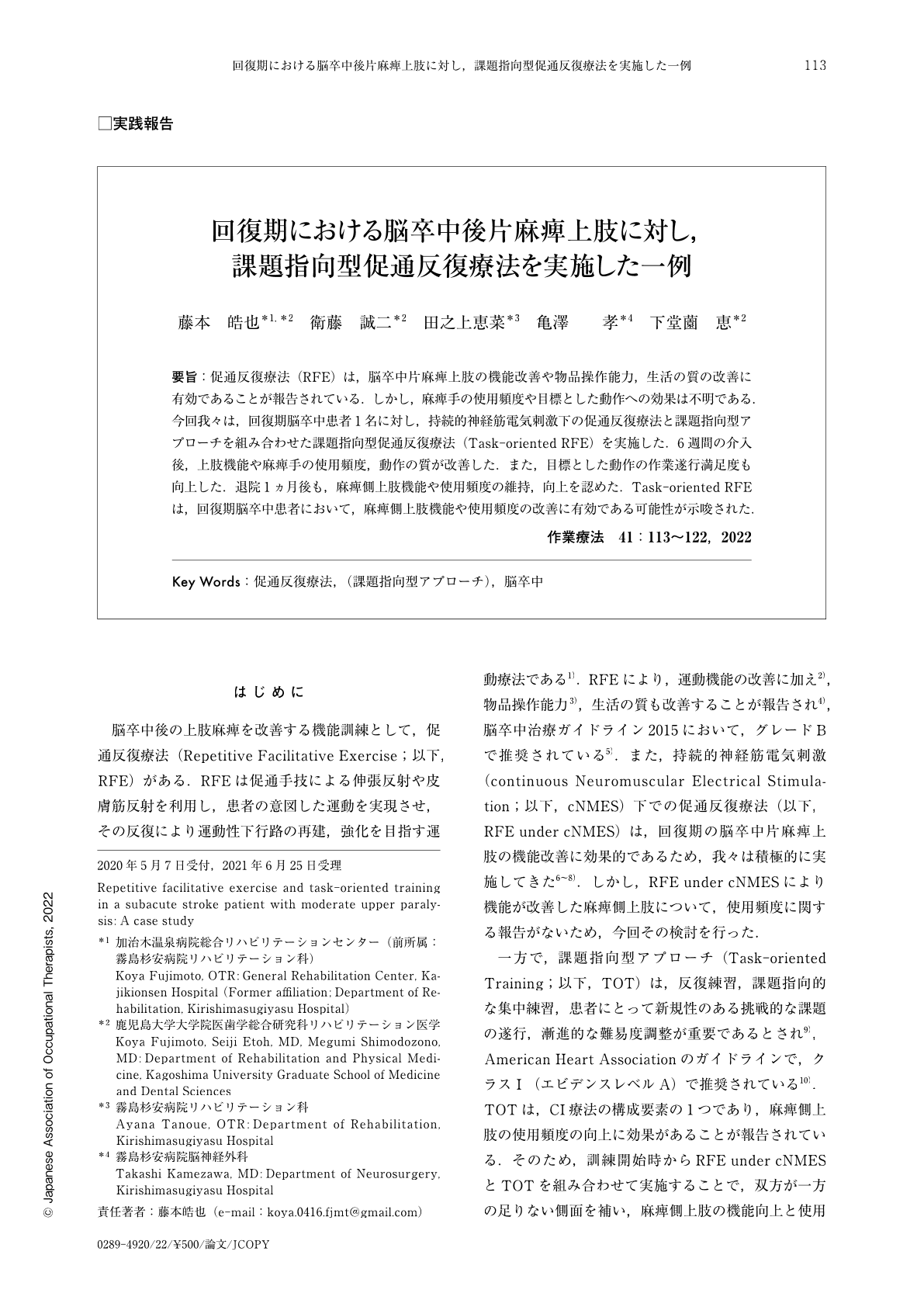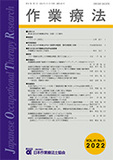Japanese
English
- 販売していません
- Abstract 文献概要
- 1ページ目 Look Inside
- 参考文献 Reference
要旨:促通反復療法(RFE)は,脳卒中片麻痺上肢の機能改善や物品操作能力,生活の質の改善に有効であることが報告されている.しかし,麻痺手の使用頻度や目標とした動作への効果は不明である.今回我々は,回復期脳卒中患者1名に対し,持続的神経筋電気刺激下の促通反復療法と課題指向型アプローチを組み合わせた課題指向型促通反復療法(Task-oriented RFE)を実施した.6週間の介入後,上肢機能や麻痺手の使用頻度,動作の質が改善した.また,目標とした動作の作業遂行満足度も向上した.退院1ヵ月後も,麻痺側上肢機能や使用頻度の維持,向上を認めた.Task-oriented RFEは,回復期脳卒中患者において,麻痺側上肢機能や使用頻度の改善に有効である可能性が示唆された.
Repetitive facilitative exercise (RFE) is a form of physiotherapy that has been shown to improve hemiplegic upper limb function, the ability to manipulate objects, and the patient's quality of life after stroke; however, the use of the hemiplegic hand in daily life and the effect on targeted movements after intervention have not yet been reported. We evaluated the effects of “Task-oriented RFE,” which combines RFE under continuous neuromuscular electrical stimulation and task-oriented training for the treatment of a hemiplegic upper limb in a subacute stroke patient. The subject did not report any adverse effects during RFE sessions. Upper-extremity function, use of the paralyzed hand in daily life, and the quality of movement improved after 6 weeks of intervention. In addition, satisfaction with performance of the targeted movements also improved. The function of the upper extremity improved 1 month after discharge. The results suggest that Task-oriented RFE may be effective in improving function and the use of a paralyzed upper extremity in subacute stroke patients.

Copyright © 2022, Japanese Association of Occupational Therapists. All rights reserved.


